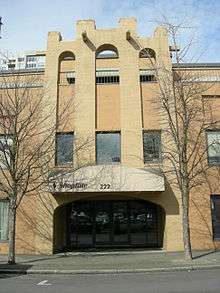Trianon Ballrooms

The Trianon Ballroom was the name given to a number of ballrooms in cities during America's big-band era. The first and most prominent Trianon opened in 1922 in the Woodlawn neighborhood of Chicago, Illinois, Designed by renowned theater architects Rapp & Rapp, it was owned and operated by William and Andrew Karzas, who opened the Aragon Ballroom in Chicago four years later. The Trianon's size, opulence and success led to other ballrooms to be similarly named in identifying with the original. Cleveland, Philadelphia, Seattle, Toledo, and the Los Angeles suburb of South Gate each had a Trianon Ballroom. However, although they shared a common name, there is no indication that they shared common ownership or management.
The location in Chicago at 6201 Cottage Grove Avenue was the origination point for many live broadcasts on Chicago radio station WGN. It was demolished in 1967.
The South Gate Trianon was owned by band leader Horace Heidt, a contemporary of Lawrence Welk, and was used for national radio broadcasts on the old Mutual Broadcasting system during World War II.
Of the Toledo Trianon, built in 1925 on Madison Avenue and torn down in 1954, it has been written:
Then there was the Trianon Ballroom. Talk about finding romance and falling in love! A night of dancing on the 60 by 180-foot dance floor cost 25 cents. Patrons could find romance and fall in love to the sounds of the best bands in the land. Giant mirror balls cast a romantic shower of diamonds over everyone. Great entertainment came from the Dorsey Brothers, Benny Goodman, Glen Miller, and Toledo's own Helen O'Connell. So-called "low" beer, or 3.2 beer, nickel Cokes, and all this wonderful music made it so easy to fall in love at the Trianon. And if nothing else, more marriages were created at the Trianon than anything else. Good behavior was demanded and enforced. Acting up could result in being banned from the Trianon, sometimes for life! To many, this was the ultimate penalty.[1]
The Seattle Trianon today has been converted an office building, (see: Victor Aloysius Meyers).
Notes
- ↑ Mauk, Clint (March 24, 2009). "Entertainment: The Good and the Bad". Toledo.com. Retrieved July 14, 2010.